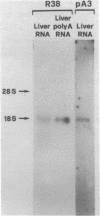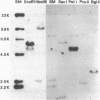Abstract
Two recombinant clones, pA2 and pA3, containing cDNA sequences for human aldolase B have been isolated from a full length human liver cDNA library. The larger one, pA3, has been subcloned in M13 phage and completely sequenced with the chain terminator method. The sequence covers 1,600 nucleotides including the whole coding region (1,050 nucleotides), 67 nucleotides from the 5' non-coding region and the whole 3' non-coding region, 440 nucleotides long, down to the poly-A tail. Comparison with rabbit aldolase A and with a partial sequence of rat aldolase B, shows a homology of about 76% for aldolase A and of about 94% for aldolase B, which indicates that the sequenced cDNA codes for the liver isoenzyme. This is the first complete sequence reported for human aldolase B. The pA3 clone strongly hybridizes to 18S mRNA from human adult liver as expected from the size of the isolated cDNA.
Full text
PDF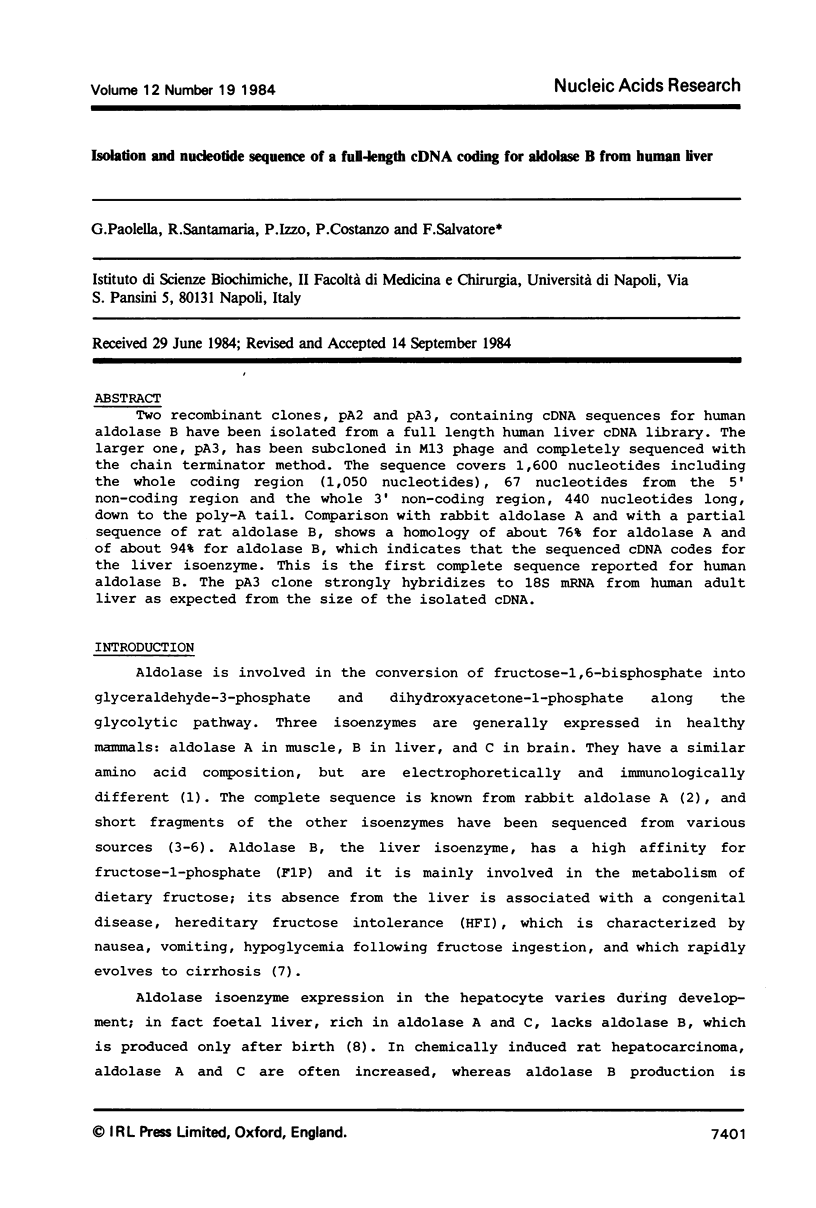
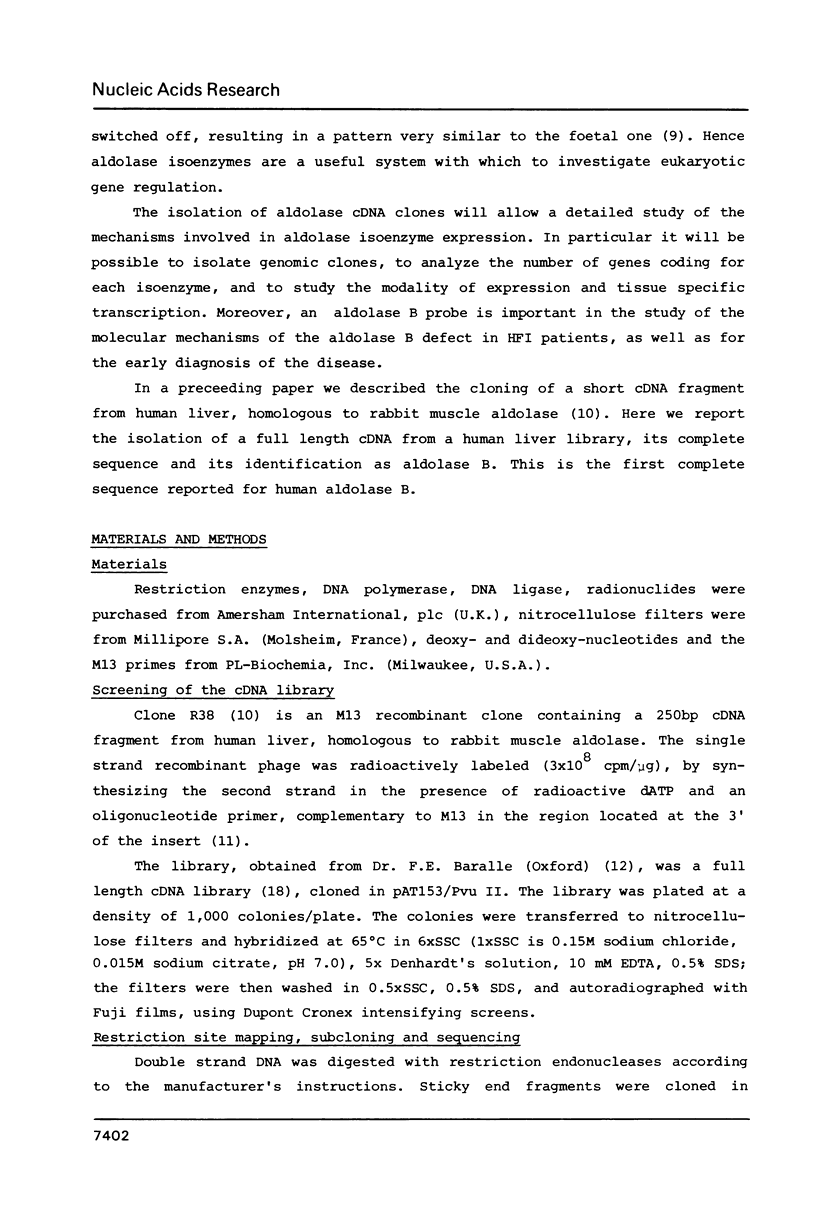
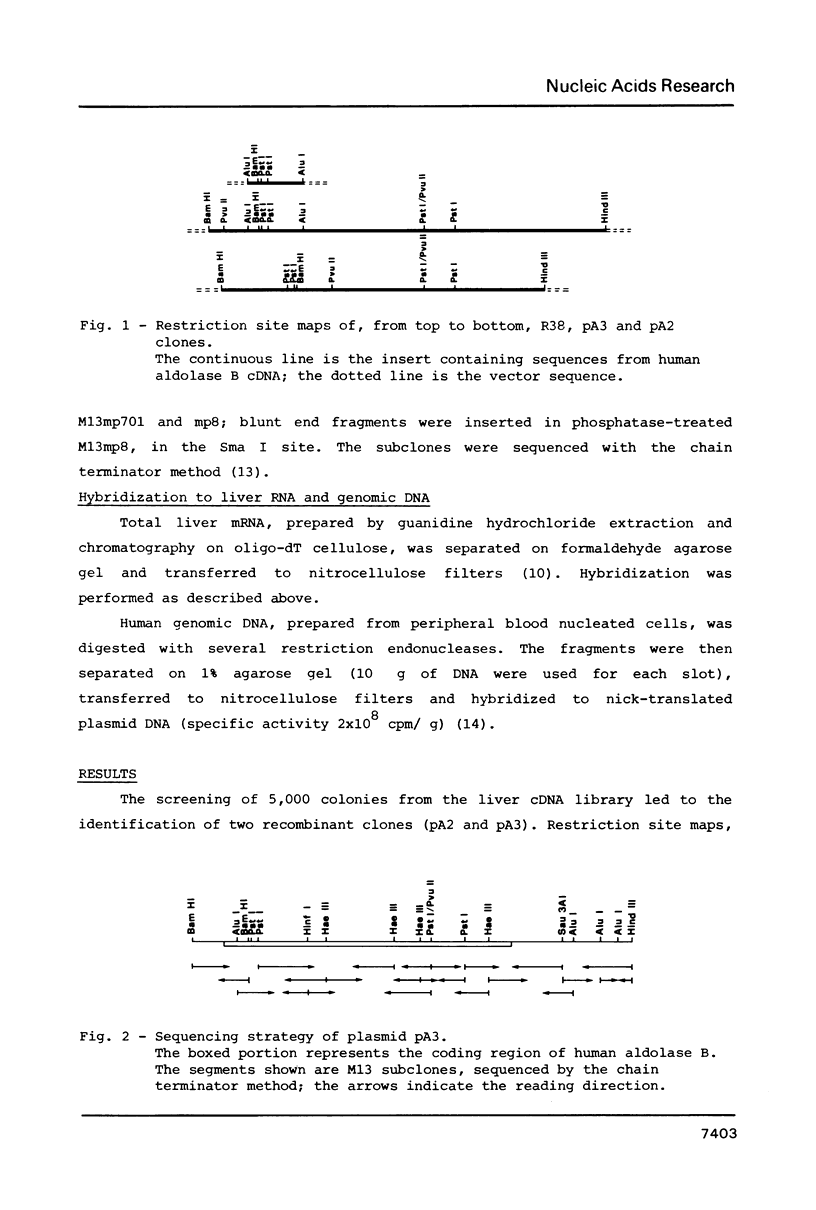
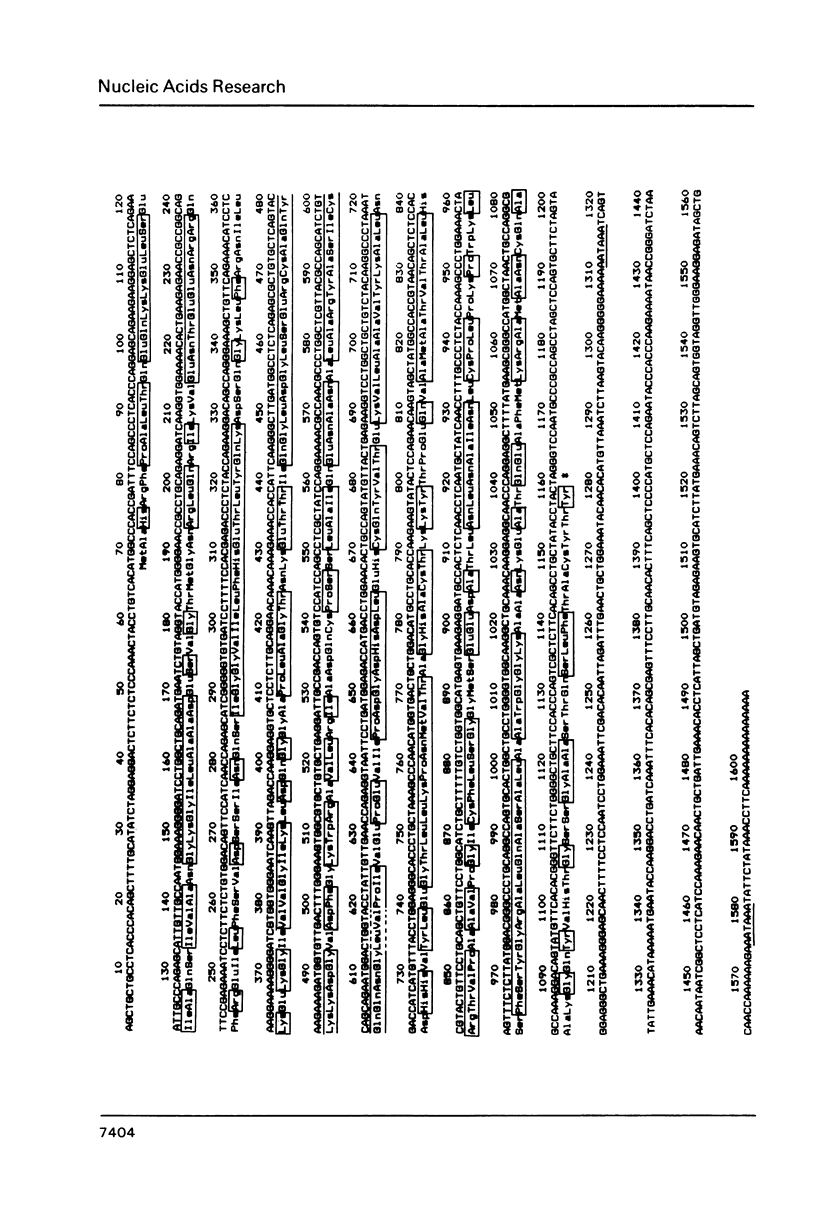
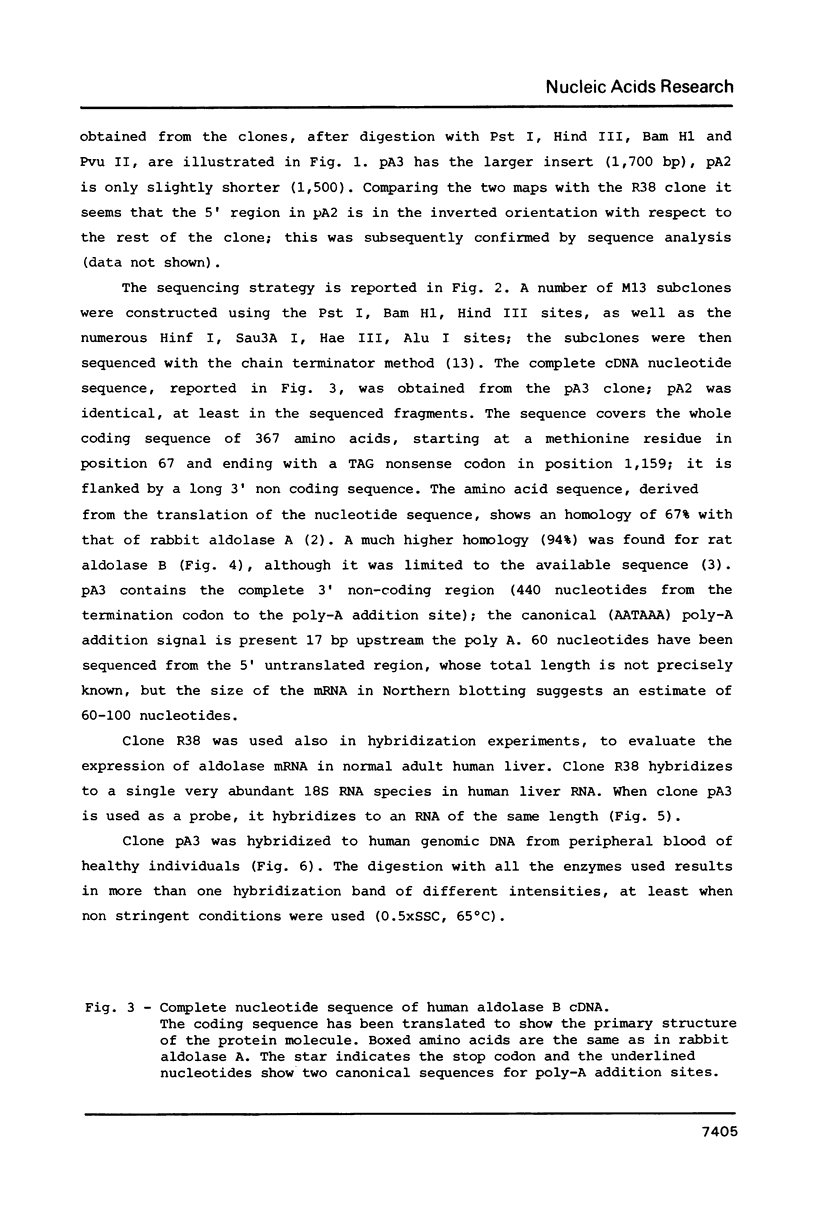
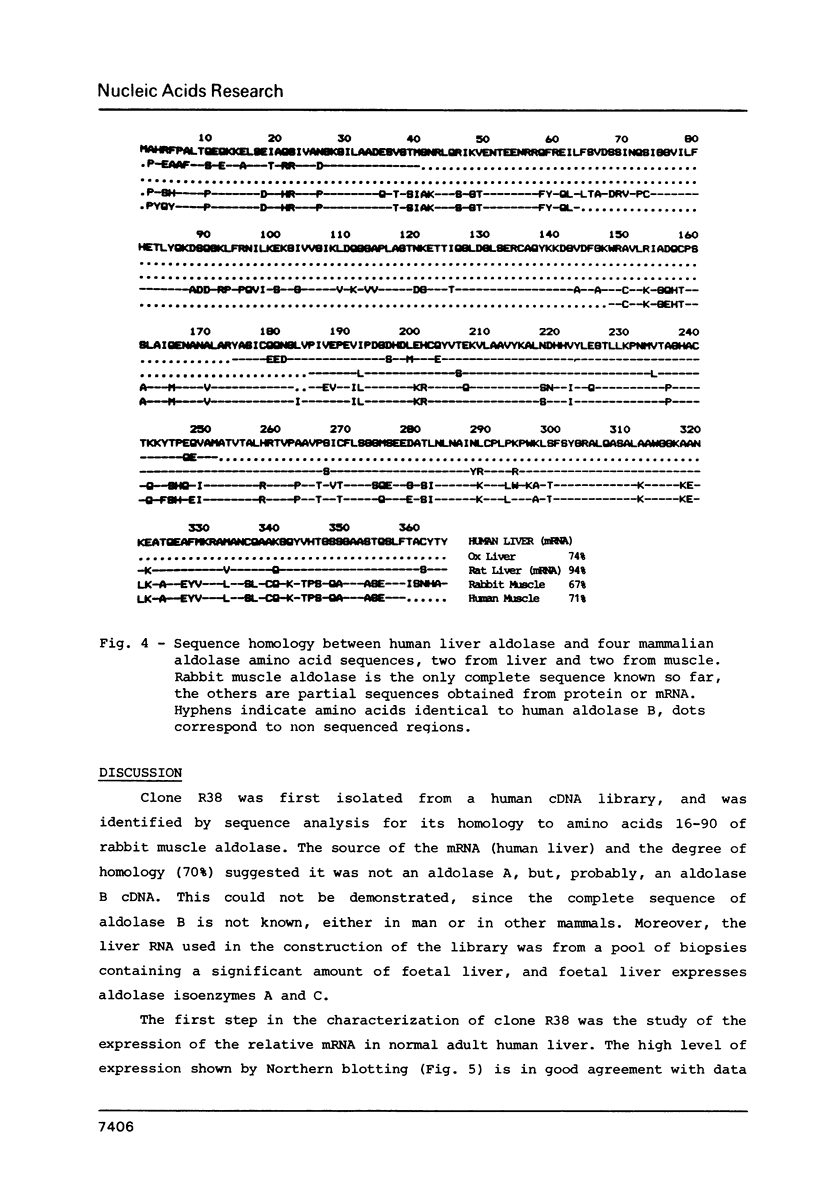
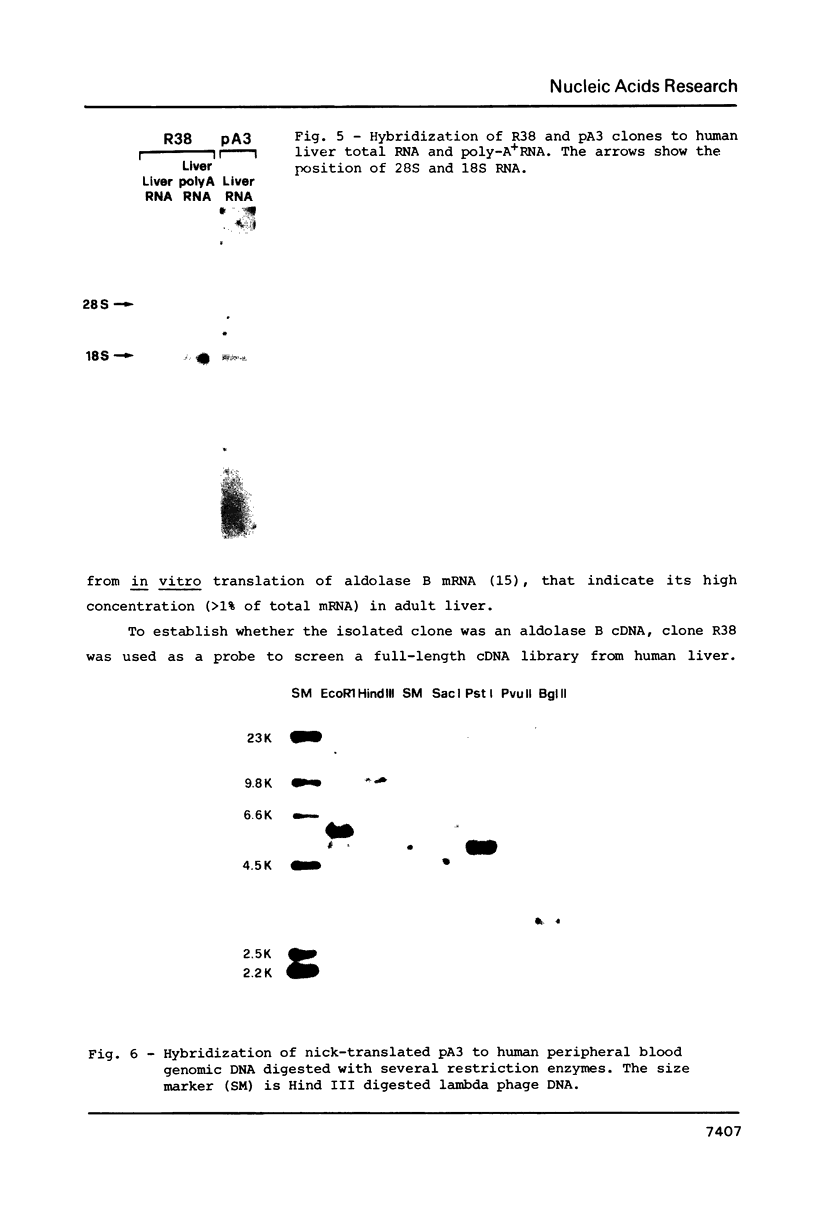
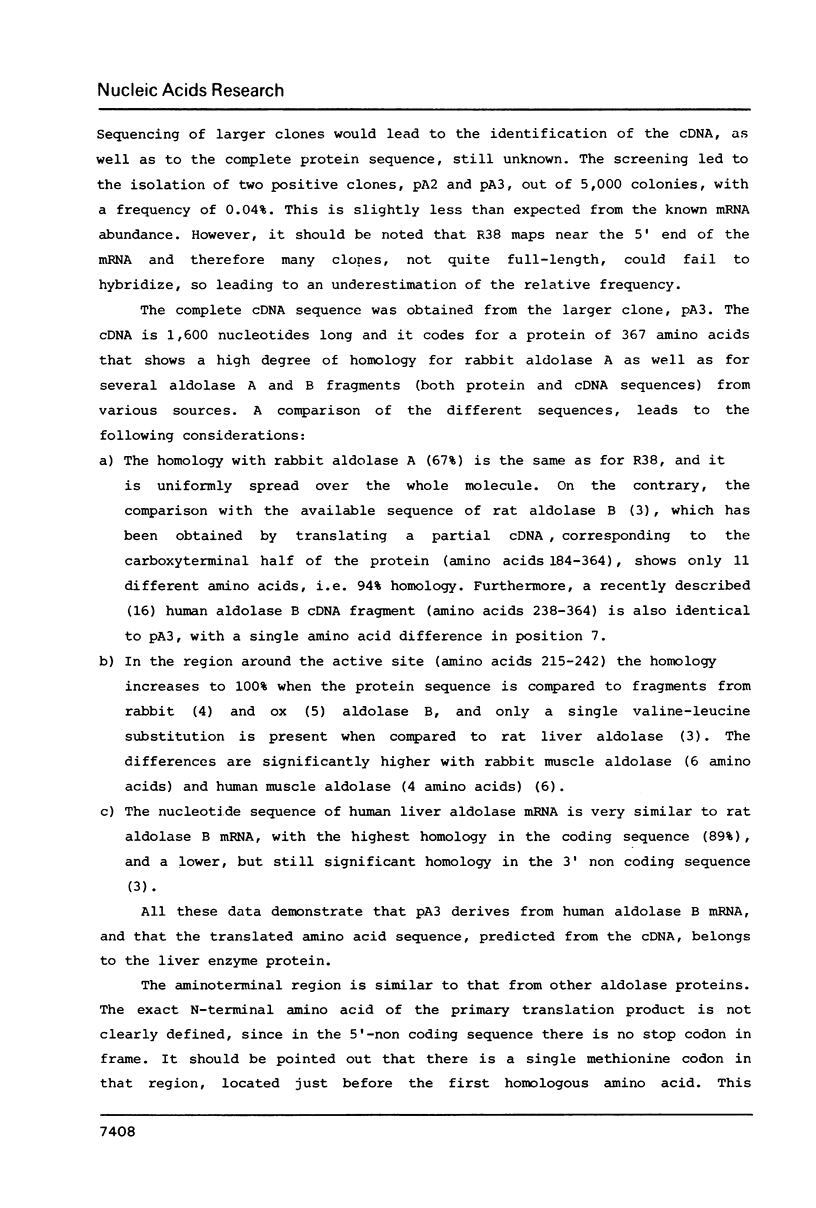
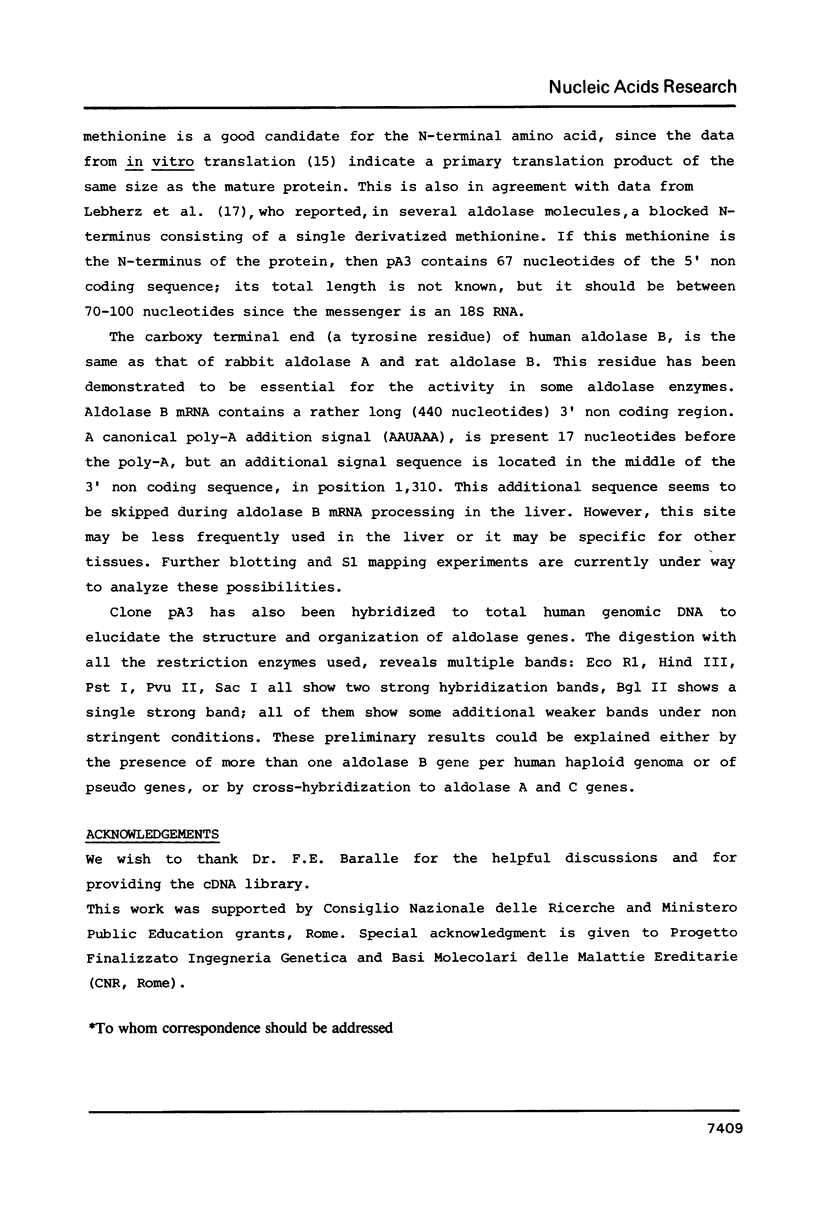
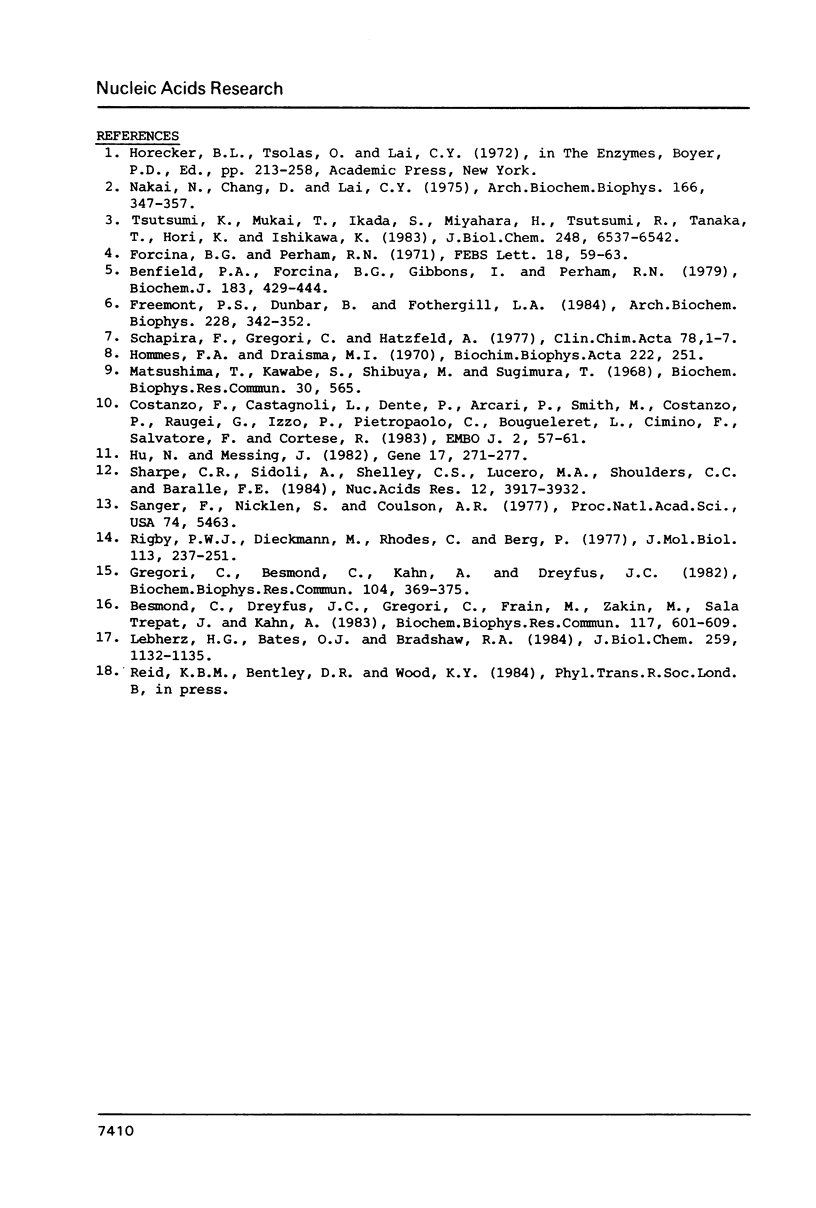
Images in this article
Selected References
These references are in PubMed. This may not be the complete list of references from this article.
- Benfield P. A., Forcina B. G., Gibbons I., Perham R. N. Extended amino acid sequences around the active-site lysine residue of class-I fructose 1,6-bisphosphate aldolases from rabbit muscle, sturgeon muscle, trout muscle and ox liver. Biochem J. 1979 Nov 1;183(2):429–444. doi: 10.1042/bj1830429. [DOI] [PMC free article] [PubMed] [Google Scholar]
- Besmond C., Dreyfus J. C., Gregori C., Frain M., Zakin M. M., Sala Trepat J., Kahn A. Nucleotide sequence of a cDNA clone for human aldolase B. Biochem Biophys Res Commun. 1983 Dec 16;117(2):601–609. doi: 10.1016/0006-291x(83)91243-3. [DOI] [PubMed] [Google Scholar]
- Costanzo F., Castagnoli L., Dente L., Arcari P., Smith M., Costanzo P., Raugei G., Izzo P., Pietropaolo T. C., Bougueleret L. Cloning of several cDNA segments coding for human liver proteins. EMBO J. 1983;2(1):57–61. doi: 10.1002/j.1460-2075.1983.tb01380.x. [DOI] [PMC free article] [PubMed] [Google Scholar]
- Forcina B. G., Perham R. N. Amino acid sequence homology between muscle and liver aldolases. FEBS Lett. 1971 Oct 15;18(1):59–63. doi: 10.1016/0014-5793(71)80406-4. [DOI] [PubMed] [Google Scholar]
- Freemont P. S., Dunbar B., Fothergill L. A. Human skeletal-muscle aldolase: N-terminal sequence analysis of CNBr- and o-iodosobenzoic acid-cleavage fragments. Arch Biochem Biophys. 1984 Jan;228(1):342–352. doi: 10.1016/0003-9861(84)90075-4. [DOI] [PubMed] [Google Scholar]
- Grégori C., Besmond C., Kahn A., Dreyfus J. C. Characterization of messenger RNA for aldolase B in adult and fetal human liver. Biochem Biophys Res Commun. 1982 Jan 29;104(2):369–375. doi: 10.1016/0006-291x(82)90646-5. [DOI] [PubMed] [Google Scholar]
- Hommes F. A., Draisma M. I. The development of L- and M-type aldolases in rat liver. Biochim Biophys Acta. 1970 Oct 27;222(1):251–252. doi: 10.1016/0304-4165(70)90380-6. [DOI] [PubMed] [Google Scholar]
- Hu N., Messing J. The making of strand-specific M13 probes. Gene. 1982 Mar;17(3):271–277. doi: 10.1016/0378-1119(82)90143-3. [DOI] [PubMed] [Google Scholar]
- Lebherz H. G., Bates O. J., Bradshaw R. A. Cellular fructose-P2 aldolase has a derivatized (blocked) NH2 terminus. J Biol Chem. 1984 Jan 25;259(2):1132–1135. [PubMed] [Google Scholar]
- Matsushima T., Kawabe S., Shibuya M., Sugimura T. Aldolase isozymes in rat tumor cells. Biochem Biophys Res Commun. 1968 Mar 12;30(5):565–570. doi: 10.1016/0006-291x(68)90090-9. [DOI] [PubMed] [Google Scholar]
- Nakai N., Chang D., Lai C. Y. Studies on the structure of rabbit muscle aldolase. Ordering of the tryptic peptides; sequence of 164 amino acid residues in the NH2-terminal BrCN peptide. Arch Biochem Biophys. 1975 Jan;166(1):347–357. doi: 10.1016/0003-9861(75)90397-5. [DOI] [PubMed] [Google Scholar]
- Rigby P. W., Dieckmann M., Rhodes C., Berg P. Labeling deoxyribonucleic acid to high specific activity in vitro by nick translation with DNA polymerase I. J Mol Biol. 1977 Jun 15;113(1):237–251. doi: 10.1016/0022-2836(77)90052-3. [DOI] [PubMed] [Google Scholar]
- Sanger F., Nicklen S., Coulson A. R. DNA sequencing with chain-terminating inhibitors. Proc Natl Acad Sci U S A. 1977 Dec;74(12):5463–5467. doi: 10.1073/pnas.74.12.5463. [DOI] [PMC free article] [PubMed] [Google Scholar]
- Schapira F., Gregori C., Hatzfeld A. Isoelectrofocusing of aldolase B from normal human livers and from livers with hereditary fructose intolerance. Clin Chim Acta. 1977 Jul 1;78(1):1–8. doi: 10.1016/0009-8981(77)90331-x. [DOI] [PubMed] [Google Scholar]
- Sharpe C. R., Sidoli A., Shelley C. S., Lucero M. A., Shoulders C. C., Baralle F. E. Human apolipoproteins AI, AII, CII and CIII. cDNA sequences and mRNA abundance. Nucleic Acids Res. 1984 May 11;12(9):3917–3932. doi: 10.1093/nar/12.9.3917. [DOI] [PMC free article] [PubMed] [Google Scholar]
- Tsutsumi K., Mukai T., Hidaka S., Miyahara H., Tsutsumi R., Tanaka T., Hori K., Ishikawa K. Rat aldolase isozyme gene. J Biol Chem. 1983 May 25;258(10):6537–6542. [PubMed] [Google Scholar]



